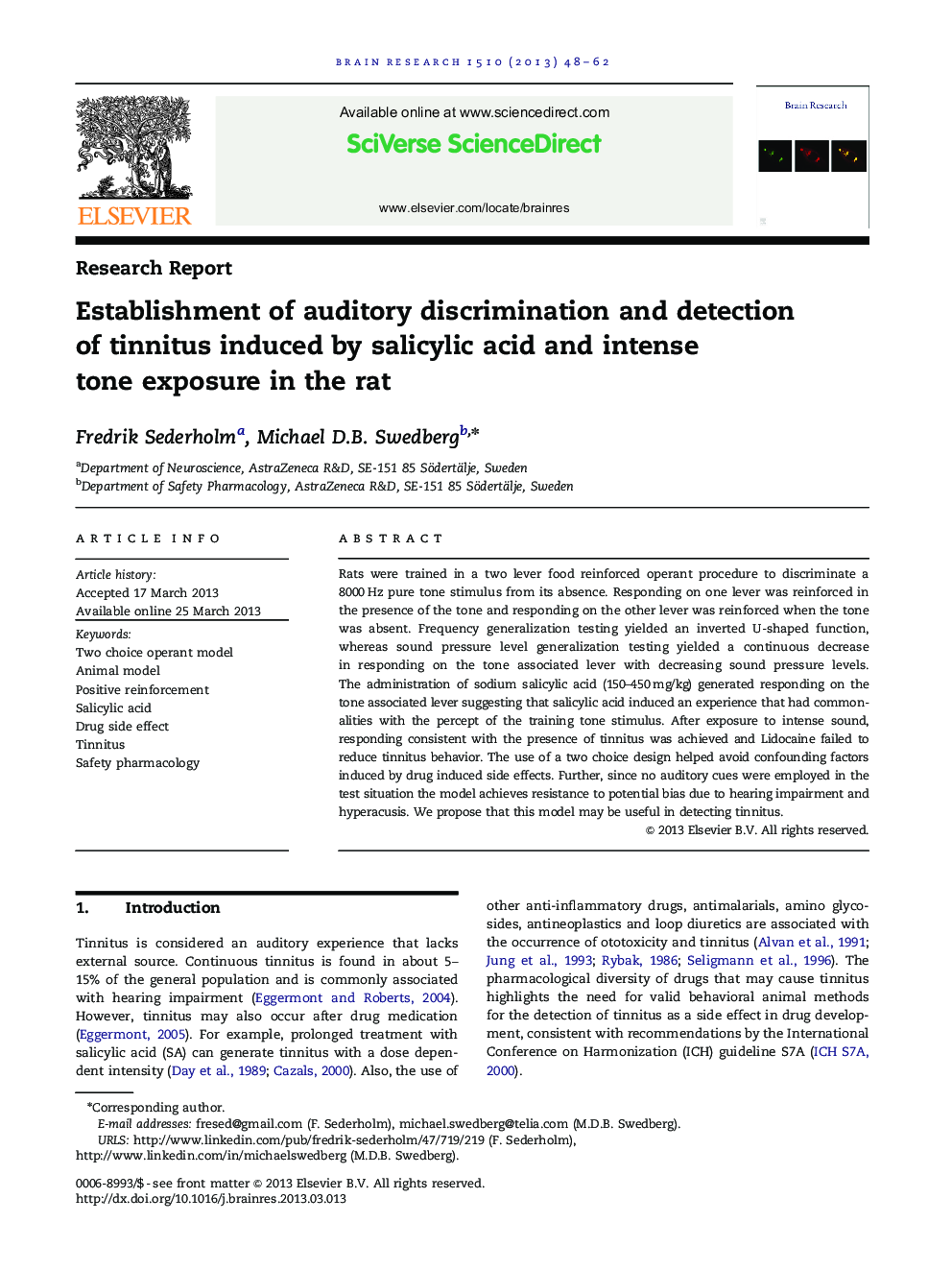| کد مقاله | کد نشریه | سال انتشار | مقاله انگلیسی | نسخه تمام متن |
|---|---|---|---|---|
| 6263897 | 1613929 | 2013 | 15 صفحه PDF | دانلود رایگان |
- Rats trained to discriminate 8Â kHz tone vs silence by 10 training sessions.
- Inverted U-shaped frequency response curve.
- Monotonic sound pressure response curve.
- Salicylic acid caused tinnitus like responding.
- Intense tone exposure caused tinnitus-like condition up to 20 days.
Rats were trained in a two lever food reinforced operant procedure to discriminate a 8000Â Hz pure tone stimulus from its absence. Responding on one lever was reinforced in the presence of the tone and responding on the other lever was reinforced when the tone was absent. Frequency generalization testing yielded an inverted U-shaped function, whereas sound pressure level generalization testing yielded a continuous decrease in responding on the tone associated lever with decreasing sound pressure levels. The administration of sodium salicylic acid (150-450Â mg/kg) generated responding on the tone associated lever suggesting that salicylic acid induced an experience that had commonalities with the percept of the training tone stimulus. After exposure to intense sound, responding consistent with the presence of tinnitus was achieved and Lidocaine failed to reduce tinnitus behavior. The use of a two choice design helped avoid confounding factors induced by drug induced side effects. Further, since no auditory cues were employed in the test situation the model achieves resistance to potential bias due to hearing impairment and hyperacusis. We propose that this model may be useful in detecting tinnitus.
Journal: Brain Research - Volume 1510, 13 May 2013, Pages 48-62
